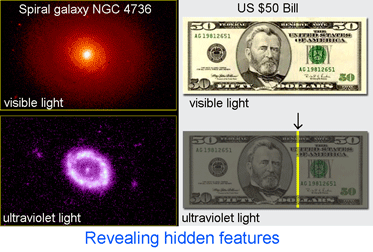Counting angels with DNA: update
“It is impossible to describe biological diversity with traditional approaches. Molecular methods are the way forward–especially, perhaps in the form of DNA barcodes” observed Mark Blaxter in a 2003 Nature commentary, “Counting angels with DNA“, on the first paper proposing “DNA barcodes” as a standardized method for identifying species.
Five years on, how do things look? I believe the scientific and practical value of molecular (ie DNA-based) identification of species is established. Of course visual methods will often be the method of choice to identify specimens in the lab and in the field, but the standardized genetic libraries (aka DNA barcode databases) linked to specimens stored in museums are an increasingly valuable reference for assigning specimens to known species and as a means of species discovery (for more, see www.barcoding.si.edu; www.barcodinglife.org).
 In addition to helping identify what is already known, DNA analysis can reveal what would otherwise remain hidden. In 16 May 2008 Science, researchers from Cornell College, Smithsonian Institution, US Department of Agriculture, University of Maryland, and Ithaca College use DNA to reveal hidden diversity in Blepharoneura, a neotropical genus of tephritid fruit flies that feeds within the flowers or fruits of plants in the cucumber family (Cucurbitaceae). To skip to the conclusion, mtCOI sequencing of 2857 flies reared from 24 cucurbit host species collected in six locations in Central and South America revealed 52 morphologically similar species (most were entirely indistinguishable) with “highly conserved patterns of specificity to host taxa and host parts.” Nuclear genes showed the same pattern of genetic clustering as mitochondrial COI.
In addition to helping identify what is already known, DNA analysis can reveal what would otherwise remain hidden. In 16 May 2008 Science, researchers from Cornell College, Smithsonian Institution, US Department of Agriculture, University of Maryland, and Ithaca College use DNA to reveal hidden diversity in Blepharoneura, a neotropical genus of tephritid fruit flies that feeds within the flowers or fruits of plants in the cucumber family (Cucurbitaceae). To skip to the conclusion, mtCOI sequencing of 2857 flies reared from 24 cucurbit host species collected in six locations in Central and South America revealed 52 morphologically similar species (most were entirely indistinguishable) with “highly conserved patterns of specificity to host taxa and host parts.” Nuclear genes showed the same pattern of genetic clustering as mitochondrial COI.
This report highlights an exciting scientific challenge raised by genetic surveys of biodiversity, including DNA barcoding: there are far more species, each with biologically specialized traits, than anyone has recognized. Condon et al report “diversity exceeding the original morphologic estimates by an order of magnitude” but conclude this must be an underestimate because of limited sampling (usually along single transects in one season at 6 sites in 5 countries), considering the vast expanse of neotropical forests in Central and South America. Also they used a conservative 4% mtCOI divergence as a cutoff (if 1% cutoff were used, an additional 10 species would be recognized, and several generalist species would be split into narrowly specialized ones).
In closing, I wish the authors had sequenced the barcode region of COI (they analyzed a 693 bp fragment from the 3′ end of the gene which does not overlap with the 5′ DNA barcode region). It would be interesting for example to compile these results with data from the tephritid fly initiative, which aims to collect DNA barcodes from the 4500 known tephritid species. Perhaps these valuable Blepharoneura DNA samples can be reanalyzed for barcode region COI.
This entry was posted on Wednesday, May 28th, 2008 at 9:02 pm and is filed under General. You can follow any responses to this entry through the RSS 2.0 feed. Both comments and pings are currently closed.